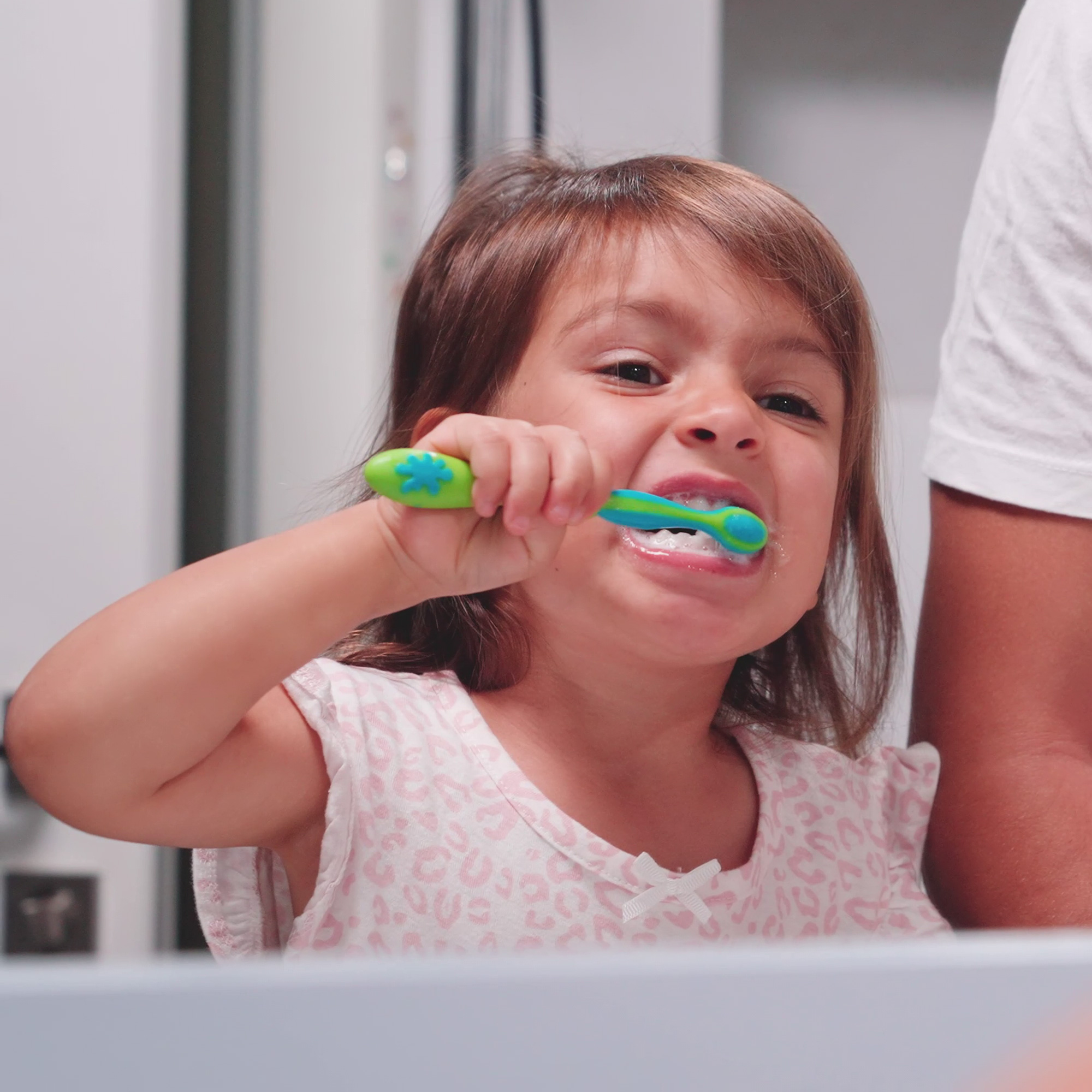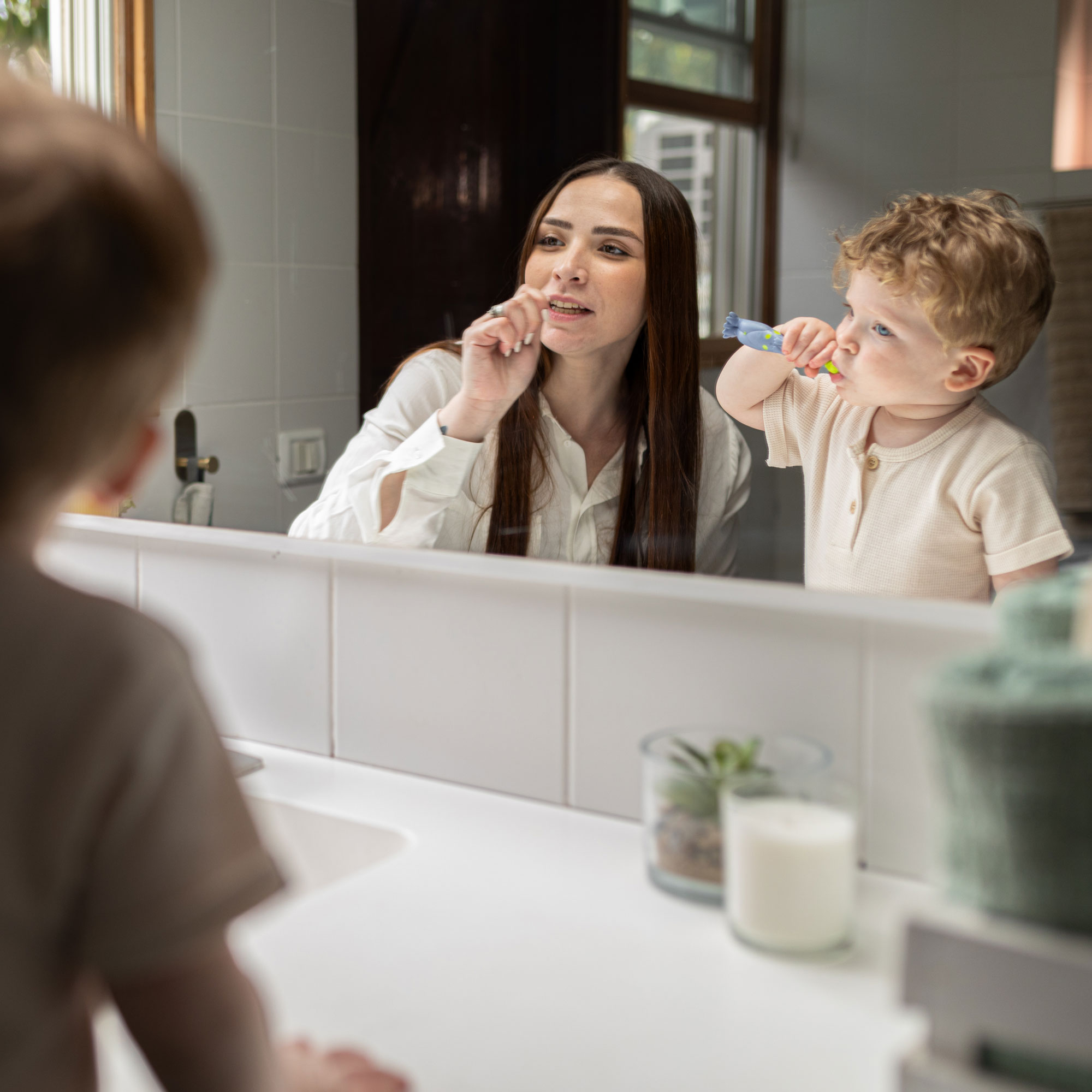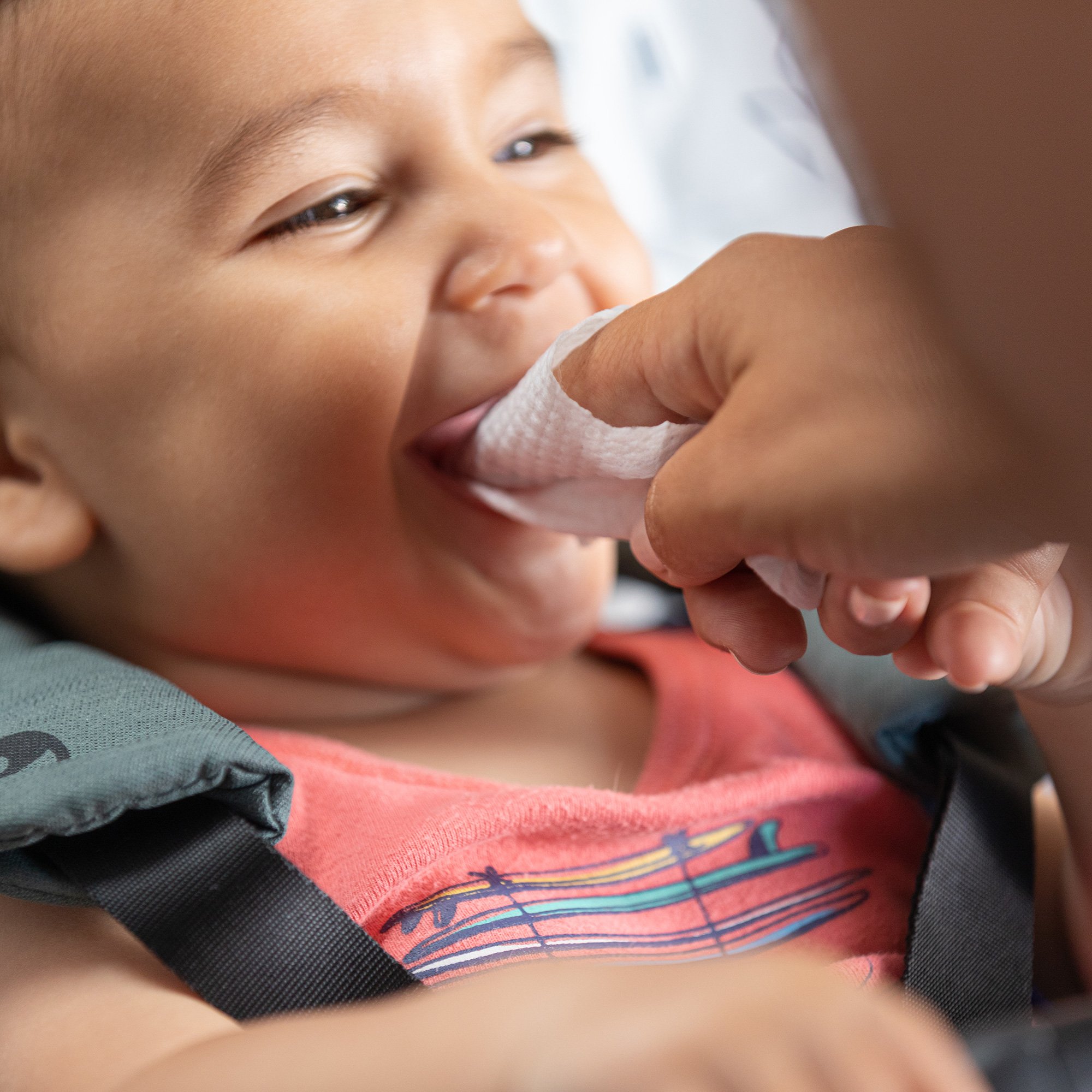When to Start Brushing Your Baby’s Teeth: A Guide for New Parents
Even before a baby’s first tooth erupts, it’s important to take care of your baby's oral hygiene and dietary habits. Around your baby’s first birthday, you should also plan to take your baby to their first dental checkup.
By doing so, you can ensure healthy gums and proper teeth development for your little one.
Parents often wonder when to start brushing their baby's teeth and how to do it safely.
In this article, we'll delve deeper into the best practices for infant oral care, including when to start brushing, how to do it safely, and the importance of early dental checkups.

When Should You Start Brushing Baby’s Teeth?
While first teeth typically appear between 6 and 10 months of age, gentle gum cleaning can begin as soon as your baby is born. Newborns' gums should be cleaned twice a day mainly to prevent bacteria buildup and to get a baby accustomed to oral hygiene.
You can clean your newborns' gums with gauze or a soft cloth, or you could use a special silicone finger brush designed for gum brushing.
Once a baby's first teeth appear, you should start brushing them with a soft toothbrush aimed at children under two years of age. Your child’s first dental visit should happen by their first birthday or within six months of their first tooth coming in, whichever occurs sooner.
How to Brush Infant Teeth Safely
To prepare for infant teeth brushing, get an age-appropriate toothbrush with soft bristles. For children under two, use a small amount of fluoride-free toothpaste. As they get older, you can switch to fluoride toothpaste as recommended by your dentist.
For safe baby teeth brushing, follow the steps below:
- Comfortable Position: Find a position that is comfortable both for you and your baby.
- Apply Toothpaste: The right amount of toothpaste should be applied (about the size of a grain of rice).
- Toothbrush Position: Position the toothbrush at a 45-degree angle.
- Start Brushing: Gently brush along the gum line, then use small circular motions and gentle back-and-forth strokes. Brush for two minutes.
- Brush Tongue: The tongue should be brushed to remove any bacteria that could contribute to tooth decay and plaque.
- Spit Out: If possible, ask your baby to spit out any excess toothpaste; children are usually able to spit on demand by two years of age.

When to Start Using Toothpaste for Babies
According to the American Dental Association, fluoride-free toothpaste (or water only) should be used for children under the age of two, unless a dentist consults otherwise.
After the age of two, toothpaste with fluoride should be introduced into a child’s teeth brushing routine.
The amount of toothpaste required changes with a child's age. To start, you should use a rice-sized amount of toothpaste; as your child grows, you should increase the amount needed accordingly. For example, from ages two to six, a pea-sized serving of toothpaste should be used for every tooth brushing session.
Tips for Establishing a Baby’s Brushing Routine
Brushing your baby’s teeth can be stressful for both the parents and the baby. Therefore, it’s important to give yourself and your baby enough time to develop a routine that is enjoyable for you both.
To establish a tooth brushing routine, consistency is important. Start by brushing your baby's teeth at roughly the same time every day; for example, you could brush first thing in the morning and right after bath time (or before bed).
Help make infant tooth brushing fun for your baby. Play them a song while you brush their teeth or sing to them. You can even make teeth brushing a part of a game. It often helps if your baby has something to look forward to after the teeth brushing is over — for example, a bedtime story.

The more you practice the routine, the easier it will get, as your baby will understand what is taking place. Remember to be patient and gentle if your baby gets fussy and know that it will pass. Some days the teeth will be brushed to perfection and other times you will only manage to brush some of the teeth, but at the end of the day, it is the consistency that matters.
Common Concerns and When to Consult a Pediatric Dentist
Teething babies often get teething pain, which happens when a tooth is ready to come out. Although it's a painful stage, it passes once the tooth emerges. You should consult a pediatrician if diarrhea, vomiting, rashes, high fever, bleeding of gums, or pus occurs.
To help ease the pain of teething, you can offer your baby teething toys. Cooling teethers can be a great fit for little ones experiencing pain, as they can be cooled off by placing them in your fridge for a short period of time.
You could also offer your baby a cooled pacifier, too. While its generally safe to place teether toys and pacifiers in the fridge, make sure they are never put into the freezer as they could become too cold and injure your baby’s mouth.
A common issue with teething is teething rash, which is caused by an increase in drooling. Drool causes skin irritation that turns into a skin rash. It's most common around the mouth and chin area but can also appear on the chest. You can help prevent the rash by wiping excess drool off of your baby’s face regularly.
White spots on baby teeth could either be completely harmless or could be a sign of a more serious issue that you should take up with your baby’s pediatric dentist. White spots can occur because of a diet issue, such as an overconsumption of acidic or sugary foods. They can signal fluorosis, enamel hypoplasia, demineralization, or plaque buildup. They can even occur if your baby sleeps with an open mouth, in which case they will disappear once the saliva builds up.
You should make an appointment with your baby’s dentist to determine the causes and treatment of white spots on your baby’s teeth.
FAQs
When do I start brushing my baby’s teeth?
You should start brushing your baby’s teeth as soon as the first tooth breaks through (usually between 6 to 10 months of age). Before those early teeth appear, make sure to gently clean your baby’s gums daily.
Do I need to use toothpaste when brushing baby teeth?
The ADA recommends using water or fluoride-free toothpaste for babies under the age of two. Fluoride toothpaste can be used once your baby is older than two years, but even then, only a pea-sized amount is used.
How often should I brush my baby’s teeth?
You should brush your baby's teeth at least twice a day, preferably in the morning and after the last meal, before bedtime. Ideally, teeth should also be brushed after any sugar intake.